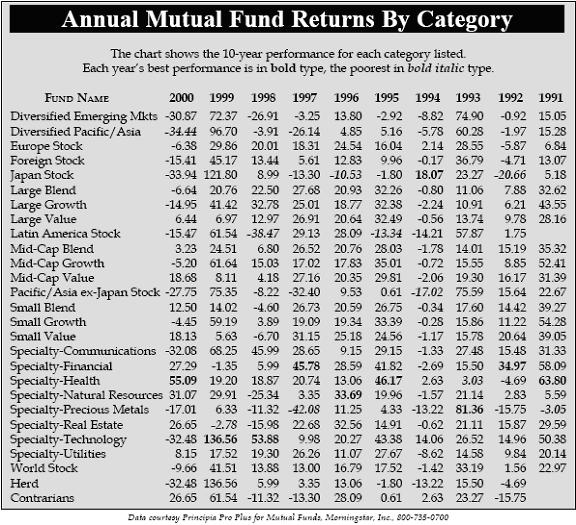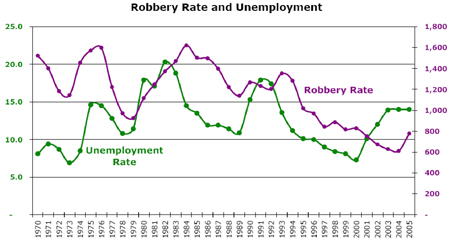Investors should avoid the new “fundamentally weighted” equity indices launched recently in an effort to outperform widely used indices such as the S&P 500 Index. Until some design flaws are addressed, there are much better alternatives.
The latest debate in the world of indexing is market capitalization weighting vs. fundamental weighting. Market capitalization is determined by multiplying the number of shares outstanding by price per share. The result is the value that the market places on the company. The typical index, such as the S&P 500, uses market cap weighting. The index allocates a weighting to each stock based on its market cap relative to the entire population of stocks. If a stock’s market cap is 1 percent of the population, then the index will allocate 1 percent of its weight to that stock. The underlying assumption is that the market, in its collective wisdom, values companies correctly.
After a three-year bear market from 2000 through 2002 that saw the S&P 500 drop 49 percent, investors began asking if there was a better way. Looking back to 2000, the S&P 500 was over-weighted in technology stocks that the market had seriously overvalued. Enter the fundamentally weighted index.
The argument for fundamentally weighted indices goes like this: Instead of allocating weightings based on market cap, weightings should be determined by some objective measure of “fundamental” value. After all, market cap is highly subjective. It is determined by ordinary people, and sometimes we make mistakes. The technology bubble of the late 1990s serves as an example.
A major proponent of indexing, professor Jeremy Siegel of the Wharton School of the University of Pennsylvania who wrote “Stocks for the Long Run,” has recently come out in favor of fundamental indexing. WisdomTree Investments Inc., for which Mr. Siegel serves as a senior advisor, recently launched several fundamental index funds that weight stocks based on dividend yield. This way, the company that pays out the most in dividends receives the highest weighting. Siegel argues that dividends are an objective measure of a company’s size and value. After all, the cash used to pay dividends has to come from somewhere, and it can’t be generated by accounting shenanigans. According to back testing (applying the new indices’ strategy to prior time periods), the company’s domestic large-cap, mid-cap and small-cap indices all outperform indices from Standard and Poor’s and Russell.
So the lines have been drawn. Supporters of the efficient market hypothesis say that market cap weighting is the superior method, since they believe that all stocks are priced appropriately. Fundamental weighting draws its followers from those who are looking for a better way to index. They want to weight stocks based on something more objective than the collective wisdom of the market. A third camp is made up of those who still believe that active portfolio management will beat indexing over the long term, but we’ll leave those lost souls for another article.
So who’s right? Well, first of all, let’s point out the obvious: Over a short period, there’s no way to tell which strategy will outperform. However, over the long term we can determine what kind of returns and volatility to expect from these indexing strategies. For example, using historical data for the S&P 500, we can make an educated guess about the index’s future. The S&P 500 is highly diversified, and it has returned, on average, over 10 percent a year since 1926. There have been ups and downs along the way, but the volatility we saw recently during the three-year bear market was atypical.
Fundamentally weighted indices, because of the way they are constructed, can end up looking like very different animals. For example, by weighting stocks based on dividend yields, the WisdomTree indices concentrate on certain industries. The indices are also much more sensitive to interest rate movements than market cap weighted indices.
First, an example of the focus on high-yielding industries: the WisdomTree Smallcap Dividend Index is almost 60 percent invested in the financial sector. This is not a typo. For comparison, the S&P Smallcap 600 Index allocates only 16 percent to the financial sector. Companies in the financial industry typically offer high yields, which skews the WisdomTree index toward these companies. Next, an example of interest rate sensitivity. The WisdomTree Web site proudly trumpets how its indices have outperformed more well-known indices since 1980. However, any follower of the market knows that interest rates have headed in only one direction since 1980: straight down. Since decreases in interest rates make higher-yielding stocks more attractive, of course these indices have outperformed! To illustrate, for the five-year period beginning Sept. 30, 1981, the yield on the 10 Year U.S. Treasury Bill fell from its peak by 53 percent. Figure 1, above right, indicates relevant returns for this period. Instead of a WisdomTree Index, it substitutes the Fidelity Equity Income Fund, which focuses on high-yielding stocks and began operations in 1966.
The first lesson from this table is that strategies focusing on yield will tend to outperform during periods of falling interest rates. Another lesson is that a focus on yield is not the same as a value focus. Value investors typically look for mispriced stocks selling at low multiples of profits, assets or some other metric. High yields and low multiples do not always go hand in hand. Therefore, when evaluating an index that is weighted based on dividends or other fundamental measures, it may not be appropriate to assume it will perform similarly to a broad value index.
Issues With Fundamental Weighting
| Investment | Annualized Return from 9/30/81– 9/30/86 |
| Fidelity Equity Income Fund | 24.29% |
| Russell 1000 Value Index | 22.29% |
| S&P 500 Index | 20.17% |
The allure of indexing for the average investor is that it provides low-cost exposure to the entire market. Market cap weighting accomplishes this goal. Every public company has a market cap, so it will be given some weighting, however small. But fundamental weighting can lead to companies being excluded. For example, by weighting stocks based on dividends, any company that does not pay a dividend will not be included in the index. Those fastgrowers with 0 percent dividend yields? Forget them. The only way to gain exposure to these companies using WisdomTree’s funds would be to wait until the company initiates a dividend (think Microsoft).
Many stock-picking models have been created that have excellent back-tested returns. However, these models rarely, if ever, are successful going forward. While fundamental weighting with dividends may have worked in the past, there is no guarantee it will work in the future. In addition, we don’t know what further back testing of the model would have shown. Perhaps returns would have dropped significantly.
After reviewing the data, it’s clear that fundamental weighting isn’t without its flaws. But market cap weighting isn’t perfect, either. A dividend-weighted index will outperform periodically, and it may have a place in a yield-hungry investor’s portfolio. However, market cap weighting provides greater diversification, which leads to reduced risk.
Since investors vote with their dollars, the battle is still being won by the market cap indexers. We’ll see if the fundamentally weighted indexers can design better indices and end up winning the war.









